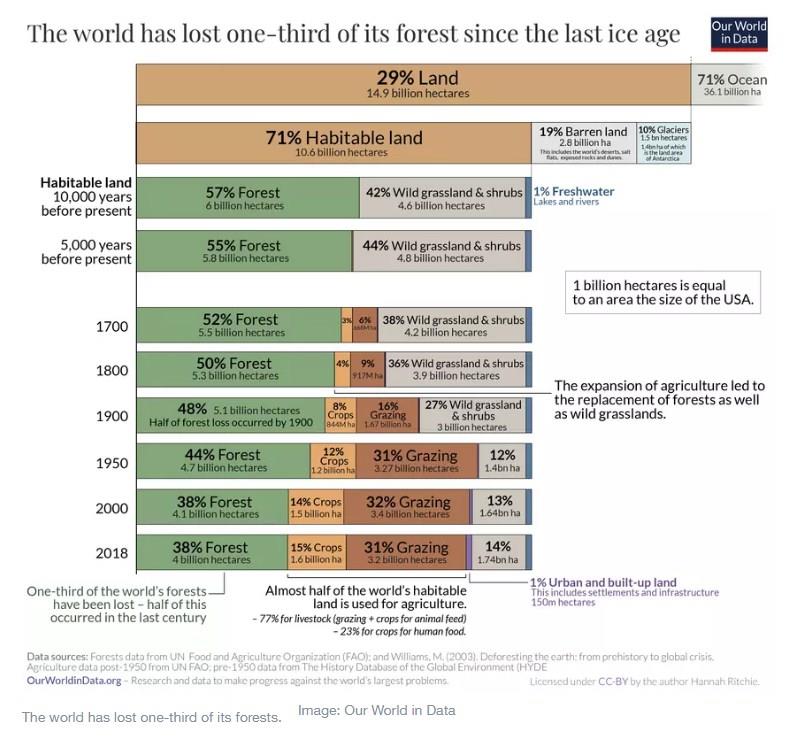by Josh Lerner*
The conservation movement, since its origins in the 19th century, has primarily relied on public funding and philanthropic contributions to achieve its ends. The Global Canopy Programme estimates that the total annual expenditure on conservation to date has been $50 billion, of which more than 80% was from governmental and philanthropic sources. Ecosystem Marketplace similarly estimates the annual flows of private investment dollars into conservation in the low billions of dollars, with the bulk of these funds going to sustainable food and fibre rather than habitat conservation.
In November 2021 at COP26, a collective $12 billion for forest-related climate finance between 2021-2025 was announced with the support of 11 nations. Yet, all these expenditures lag significantly behind the annual expenditures needed to preserve the planet’s biodiversity, estimated by Credit Suisse, McKinsey & Co and the World Wildlife Fund to be between $300 and $400 billion. Without private investment dollars, this shortfall is likely to persist indefinitely.
Combining conservation goals and private investments, a variety of factors has led to fresh approaches to the ownership and management of forestland but the barriers to successfully achieving attractive financial returns and desirable social outcomes can be daunting. The challenges and opportunities associated with forest conservation finance illustrate some of the issues with harnessing private investment capital to address socially beneficial outcomes more generally.
Interest in a third source of capital for conservation finance has swelled and there are a number of reasons why this is seen as an opportunity by investors. There are a number of reasons for the growing interest in conservation finance from the private sector. Investors of private capital are increasingly looking for “real” assets, as they provide diversification from corporate and government securities that dominate investment portfolios and fit long-term investors’ time horizons.

It also reflects a growing appetite for impact investing – a style of investing that has experienced double-digit growth in the past decade. Impact investors look for investment opportunities that produce both social and financial gains. Impact investing, with its focus on privately held assets, is related to but distinct from ESG (environmental, social and governance) focused investing, which typically focuses on public securities.
At the same time, there are some substantial challenges that forest conservation finance must overcome to achieve widespread adoption. The first of these is convincingly establishing that these investments can achieve an attractive return – however that is defined – while remaining true to its conservation objectives.
Almost inevitably, a contradiction exists between the conservation objectives and the financial return maximization. As a result, the annual returns targeted by non-profit project sponsors have been very modest (with the mast majority under 5%) and those by for-profit sponsors only somewhat less so (with the bulk between 5% and 10%). A second challenge has been structuring the investment opportunities in a way that can attract institutional funding.
Financing Forest Conservation
To scale and successfully implement forest conservation finance, there are three lessons we can distil from analysis of financial offerings to date:
1. The inherent trade-offs between risk and return deserve thoughtful discussion and analysis
The appeal of “doing well while doing good” is undeniable, but in their enthusiasm for harnessing investment capital for socially beneficial purposes, advocates of impact investment sometimes elide over the fact that the pursuit of social benefits may adversely affect financial returns. While we are optimistic that a middle-ground of projects with financial and impact characteristics that are attractive to a set of investors will emerge, the inherent trade-offs deserve thoughtful discussion and analysis.
2. Enough scale must be created to broaden the pool of investment
One defining characteristic of the investment world is the uneven distribution of capital. And large pools of capital almost by definition must write large cheques. Moreover, even the involvement of intermediaries, such as rating agencies and investment banks, requires a minimum efficient scale. The cases highlight a major challenge for an emerging asset class such as forest conservation finance: the rewards of scale.
3. Pioneers can have enormous positive spillovers in legitimizing an asset class
Success in these new investment classes requires a simultaneous ability to navigate the financial and environmental worlds, to educate as well as to invest, and to resist the “easy way out” that can lead to compromising these goals. This combination of skills is certainly not commonplace but pioneers in this space illustrate the power of the positive.
As this essay makes clear, there are undoubtedly substantial challenges in “fitting in” forest conservation finance with the impact investment model. But given the urgency of the climate and biodiversity challenges facing the planet, solving these issues is of high importance.
*Jacob H. Schiff Professor of Investment Banking, Harvard Business School
**first published in: www.weforum.org




 By: N. Peter Kramer
By: N. Peter Kramer

